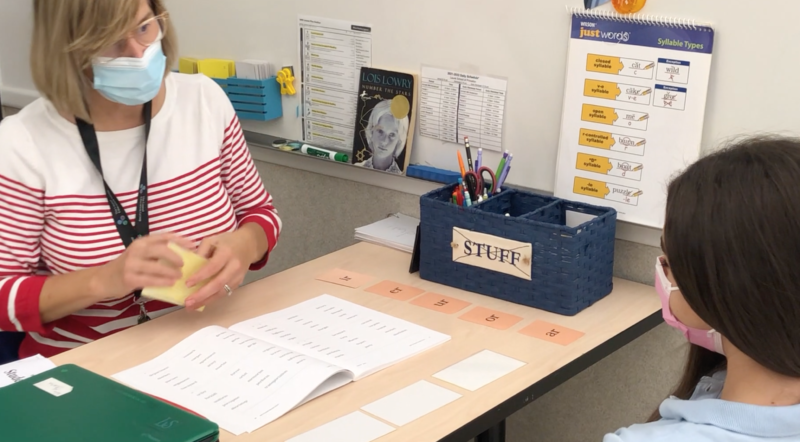
By Susan Miller
Dyslexia, the most common learning disorder worldwide, continues to be misunderstood and under-identified throughout the world, especially in underserved, vulnerable communities. What is dyslexia? Per the accepted definition published by the International Dyslexia Association, “Dyslexia is characterized by difficulties with accurate and/or fluent word recognition and by poor spelling and decoding abilities. These difficulties typically result from a deficit in the phonological component of language that is often unexpected in relation to other cognitive abilities and the provision of effective classroom instruction. Secondary consequences may include problems in reading comprehension and reduced reading experience that can impede growth of vocabulary and background knowledge.”
How common is it? Depending on the researcher, it spans from 8% to 17% of the population that present with reading weaknesses in varying degrees (Pediatrics In Review, Drs. Sally and Bennett Shaywitz, May 2003). Most states in the United States have dyslexia laws, with the exception of Idaho, but other than promoting the definition of dyslexia, the laws vary from state to state in terms of services and mandates.
As early as preschool, children begin to become aware of their differences when compared to their peers. “Mom, my friends can write their names, but I can’t remember the letters in my name or write them.” “Why is it so hard for me to finish reading a chapter that my friend reads in five minutes?”
Dyslexia has been found to be a highly genetic learning disorder with inheritability over 40%. The severity of dyslexia can be reduced if the child is immersed in a rich oral language environment and receives explicit daily instruction in letter name/sounds and phoneme awareness in Pre-K and Kindergarten early childhood.
Despite the flurry of US laws that recognize this common reading disorder, and in some states mandate the screening of dyslexia, recent studies have shown that the dyslexia laws have not led to increased identification of dyslexia, especially among African-American and Latino children (Journal of Learning Disabilities, April 2020; Odegard, Farris, and Middleton). Unidentified or poorly remediated dyslexia puts a child at risk socially and emotionally. Left untreated, children with dyslexia are at risk for drug and sexual abuse due to the acquired poor self-image. In fact, research has found the following, “the odds of a sexual abuse allegation was 2.5 times greater for children with a LD relative to children without a LD” (Helton, Kerr, Gruber; October 2017). Speaking from experience, misconceptions about learning disorders have led some dyslexic children to be mistreated since they were considered damaged in some way. In those instances, they were considered an embarrassment to the family and thought of as “stupid” by their teachers. Dr. Jerome Shultz in his book, Nowhere to Hide: Why Kids with ADHD and LD hate school and what we can do about it, provides an in-depth examination of the negative consequences of kids left unidentified and untreated.
As we start a new school year, it is imperative that all children in Pre-K through 2nd grade undergo early screening of basic language and reading skills in order to identify those children who are below benchmark when compared to their peers. We know that many children lost ground due to the pandemic, but typical children will pick up new learning quickly, while students with dyslexia will not. While it is never too late to teach someone to read, the earlier a student is identified for support, the sooner the emerging gap with their peers can be closed thus avoiding the development of social-emotional struggles that left unchecked lead to depression, withdrawal, and school avoidance. Left unidentified and/or unremediated, the whole family is impacted, not just the child. Parents, you are on the front lines when it comes to identifying dyslexia. Please check out the links below to learn more about your state’s dyslexia laws and access the International Dyslexia Association’s free parent dyslexia handbook. Advocate for your child, and educate your child’s teachers since they may not know the signs or are dismissing the significance of the warning signs for dyslexia.
https://dyslexiaida.org/ida-dyslexia-handbook/
https://improvingliteracy.org/state-of-dyslexia
Susan E. Miller is a recognized speaker and expert educator in the field of dyslexia. She has been hard at work for 30 years on behalf of students with a range of learning disorders and their families. She has presented at national and regional International Dyslexia Association conferences, Learning Disability Association of New Jersey, Association of Special Education Schools in NJ (ASAH), and Parent Teacher Organization meetings on topics including dyslexia, dyscalculia, and dysgraphia.
Susan is a Credentialed Wilson® Dyslexia Therapist and a certified educational diagnostician in the state of New Jersey. She is a LETRS credentialed local trainer (Language Essentials for Teachers of Reading and Spelling) and a certified trainer for the Acadience family of reading